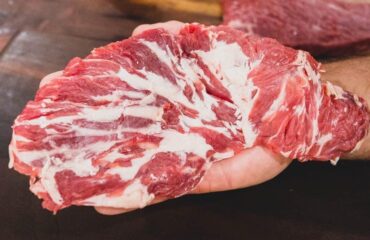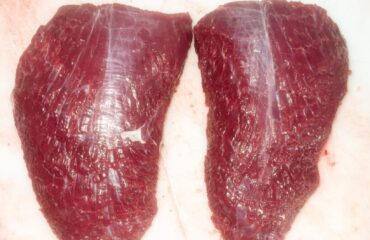“If you believe the Internet, it came from shipping practices. Back in the colonial days, an article in Mental Floss explains, New England butchers took “less prized cuts of pork,” packed them into barrels, and shipped them off to other places. “The barrels the pork went into were called ‘butts'”, the author explains. “This particular shoulder cut became known around the country as a New England specialty, and hence it became the ‘Boston butt.'”
The New York Times and other reputable publications have repeated this story, but common sense should make us skeptical. Can you think of any other food named for its shipping container name? There are plenty of historical problems with this explanation, too. For starters, Virginia and North Carolina, not New England, were the centers of the pork trade in the 18th century until eclipsed by Cincinnati in the 1830s and then by Chicago. I have searched high and low but cannot find a single printed use of the term “Boston butt” in the colonial era or even before the Civil War.
The term originated in the late 19th century, as railroads transformed the commercial meat packing industry from regional to national. Butchers in different parts of the country had slightly different ways of carving up pigs and cows. Other states and cities lent their names to various cuts as national packers standardized butchering. Thus we have New York Strip steaks and St. Louis-style ribs—another favorite of Southern barbecue cooks.
The pork shoulder originally had several other geographically-named cuts. In the meatpacking trade, the Kansas City Sun reported in 1892, “careful requirements are formulated for standard sweet pickled hams and shoulders, New York shoulders, Boston shoulders, California hams, skinned hams, pickled bellies, etc.”
According to agriculture journals and meat cutter manuals from the early 20th century, New York shoulders had the shank “cut off above the knee, trimmed close and smooth, and square at the butt.” A “California ham” was not ham at all. It was “well-rounded at the butt, and trimmed as near to the shape of a ham as possible.” This latter cut was also known as the “picnic” (for reasons I’ve been unable to discover), and that term is now the standard for the lower part of the pork shoulder.
As the use of “butt” in these agricultural manuals suggests, the name of the Boston-style cut had nothing to do with shipping containers. Consider the butt of a rifle or a cigar butt. Either crafty Bostonians were putting all sorts of things in barrels and shipping them south, or “butt” was simply a generic term for, as Merriam-Webster phrases it, “the large or thicker end part of something”—the pork shoulder, in this case. “






